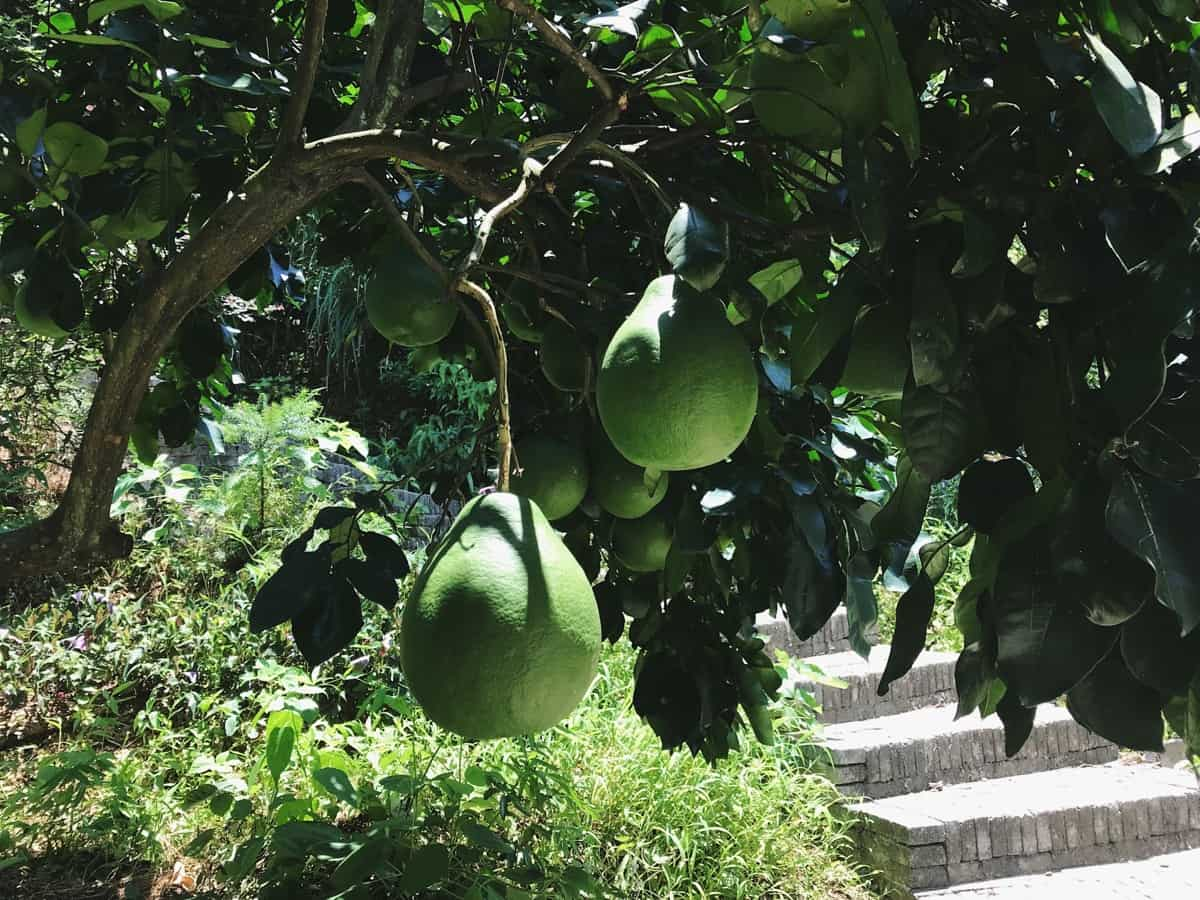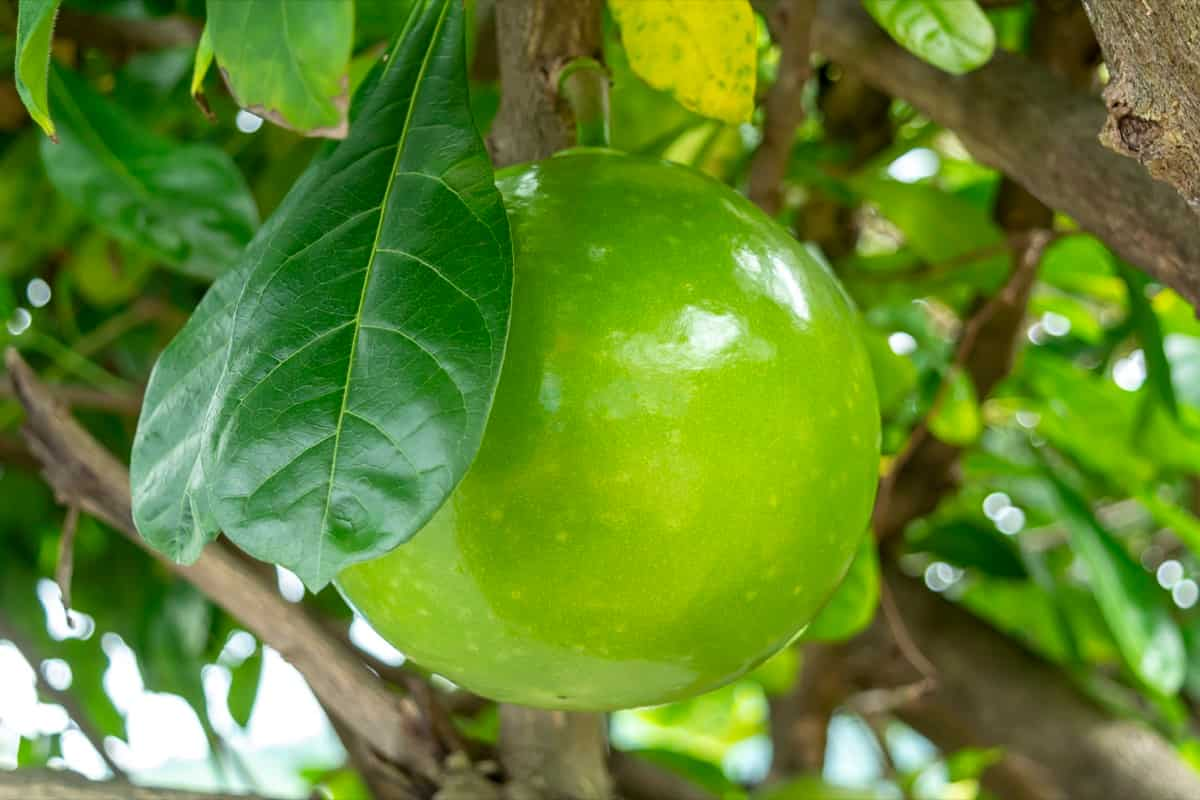Welcome to our blog, where we delve into the fascinating world of pomelo farming economics. This article will explore the cost and profit analysis of establishing a 1-acre pomelo farm. Whether you’re a seasoned farmer or simply curious about the financial aspects of pomelo cultivation, this article will provide valuable insights. We have compiled accurate data and summarized it in an easy-to-read format. So, sit back, relax, and dive into the economics and project report of 1-acre pomelo farming.

What is Pomelo Farming?
Pomelo farming involves cultivating the pomelo fruit, a large citrus fruit known for its sweet and tangy flavor. It is native to Southeast Asia and is now grown in various parts of the world. Pomelos thrive in warm climates and require well-drained soil. They have a long growing season, typically taking 6 to 8 months to mature. Pomelo trees can yield a significant quantity of fruits, making them a lucrative option for farmers.
Overview of Pomelo Trees: Biology, Production, and Uses
- Citrus maxima, a Rutaceae tree, produces the biggest citrus fruit, the grapefruit. This Southeast Asian native fruit is popular during celebrations. Pomelo phytochemicals may interact with medicines.
- Pomelo trees grow 5 to 15 meters (16 to 50 feet) tall with crooked trunks 10 to 30 centimeters thick and low-hanging, uneven branches.
- The leaves are alternating, ovate, or elliptic and 5–20 cm (2–8 inches) long with winged petioles. The leaves have a hairy underside and a leathery, dull green top. The flowers are yellow-white and fragrant.
- The pomelo fruit is enormous, measuring 15 to 25 cm (6 to 10 inches) and weighing 1 to 2 kilograms (2 to 4 pounds). It has 11–18 segments and a thicker rind than a grapefruit.
- The pomelo-orange hybrid grapefruit has a modest grapefruit taste with a tinge of bitterness. The segments’ membranes are chewy and unpleasant. With over sixty kinds, pomelos usually have a few big seeds, but others have many.
Market and Demand for Pomelo Farming
The market demand for pomelo is steadily increasing due to its unique sweet taste and health benefits. There has been a growing consumer interest in exotic fruits recently, and pomelo has gained popularity worldwide. Both domestic consumption and export opportunities drive the demand. Pomelo is used in various culinary applications, including fresh consumption, juice production, and ingredient in salads and desserts.
In case you missed it: 9 Causes of Dying Pomelo Tree and How to Fix It?

Best High-Yielding Variety for Commercial Pomelo Farming
| Variety | Country of Origin | Special Characters |
| Chandler | USA | Large, sweet fruits with pink flesh. Excellent for fresh consumption and juicing. |
| Reinking | USA | Known for its exceptional flavor and high juice content. Preferred for fresh fruit markets. |
| Kao Pan | Thailand | High yield and disease resistance. Sweet and juicy fruits, suitable for processing and fresh consumption. |
| Thong Dee | Thailand | High productivity and resistance to diseases. Large, round fruits with a thick, easy-to-peel rind. |
| Kao Tao | Thailand | Drought-tolerant and high-yielding variety. Fruits are sweet and seedless, ideal for eating fresh or making juice. |
| Luta Pink | India | Indigenous variety cultivated in Himachal Pradesh and known for its large, sweet fruits and adaptability to hilly regions. |
| Assam Bina | India | Indigenous variety with delicious taste and high juice content. Grown extensively in the Assam region. |
| Assam Grafted | India | A grafted hybrid with superior yield and quality. Ideal for commercial cultivation in India. |
| Kamyaka | India | Indigenous variety cultivated in Himachal Pradesh. Known for its large, sweet fruits and adaptability to hilly regions. |
| Balady | Egypt | Popular Egyptian variety with a rich, sweet taste and aromatic aroma. Grown for both domestic and export markets. |
Cultivation Tips and Important Points in Pomelo Farming
- Land preparation and spacing: Thoroughly prepare the land by plowing it 3-4 times and removing weeds from previous crops. Dig pits about 0.5 meters deep and wide. Maintain a 24 30- feet spacing between plants, accommodating approximately 130 to 240 plants per hectare.
- Soil and climate requirements: Pomelo can grow in different soils, from coarse sand to heavy clay. The ideal soil pH is 5.5 to 6.5. It thrives in low-lying, medium-textured fertile soils at altitudes below 400 meters. The optimum temperature ranges from 30°C to 35°C, and an annual rainfall of 150 cm to 180 cm is favorable.
- Propagation and planting: The most effective propagation method is air layering. Pomelo can also be propagated through seed or vegetative methods such as stem cutting, grafting, air layering, and budding.
- Irrigation: Regular water supply is needed to support new shoot growth, flower development, and fruit production. Drip irrigation is recommended for efficient water management.
- Intercropping and weed control: Intercropping with crops like bananas, betel nut, or shade-loving vegetables can be practiced. Regular weeding is essential to maintain soil moisture and nutrient availability.
- Pruning: Prune the pomelo tree after harvest, mainly in March or April, to control its size and shape. Six to seven months after planting, prune to promote branching and maintain 4 to 5 equally distributed branches.
- Fertilizer requirements: Organic and chemical fertilizers are recommended for good production. Apply compost at the bottom of the planting hole or mix it with one-fourth of the topsoil before refilling the hole.
- Pests and diseases: Pomelo is susceptible to pests and diseases common to citrus crops. Bacterial cancer, scabs, root rot, gumosis, and brown rot are among the issues that can arise.
- Harvesting and production: Pomelo fruits are typically ready for harvest 6 to 7 months after fruit set. An average of 85 to 110 fruits per tree per year or 18 tons per acre can be obtained.
In case you missed it: 12 Common Problems With Asparagus Plants: Treatment and Solutions

Pomelo Farming Economics and Project Report
Pomelo farming can be economically viable with proper planning and management. The initial investment includes land preparation, seedlings, irrigation systems, fertilizers, and labor. The operational costs include regular maintenance, pest control, and harvesting expenses. A mature pomelo tree can yield around 100-200 fruits annually.
The selling price of pomelo varies depending on the market demand and location. Considering all costs and revenues, a well-managed pomelo farm can generate profitable returns. Conducting a detailed project report will help assess the financial feasibility and potential profitability of pomelo farming.
Project Report of 1-Acre Pomelo Farming: Cost and Profit Analysis
| Cost of Cultivation (per acre) | USD | INR |
| Land preparation and plowing | $300 | INR 22,000 |
| Purchase of 200 pomelo saplings | $400 | INR 29,000 |
| Drip irrigation system installation | $150 | INR 11,000 |
| Fertilizers and nutrients | $250 | INR 18,000 |
| Labor and maintenance | $800 | INR 58,000 |
| Pest and disease control | $150 | INR 11,000 |
| Total cultivation cost | $2,050 | INR 1,49,000 |
Cost of Cultivation of 1AAcre Pomelo Farming
- Major expenses in pomelo farming include land preparation, sapling purchase, irrigation system installation, fertilizers and nutrients, labor and maintenance, and pest and disease control.
- Land preparation and plowing for 1-acre pomelo farming can cost approximately $300 (INR 22,000).
- Purchasing 200 high-yielding pomelo saplings for 1-acre costs around $400 (INR 29,000).
- Installing a drip irrigation system for 1-acre pomelo farming typically costs about $150 (INR 11,000).
- The expense of fertilizers and nutrients for 1-acre of pomelo farming is approximately $250 (INR 18,000).
- Labor and maintenance for 1-acre pomelo farming can cost around $800 (INR 58,000).
- The cost of pest and disease control in pomelo farming is typically about $150 (INR 11,000).
- The average cost of cultivating 1-acre of pomelo farm can range from $2,000 to $2,500 (INR 146,000 to INR 183,000).
Profits and Return to Investment from 1-Acre Pomelo Farming
- The average return on investment from 1-acre of pomelo farming can vary, but the net profit is estimated to be around $10,000 to $13,000 (INR 730,000 to INR 950,000) per acre.
- With an average pomelo yield of 10,000 fruits and a selling price of $1.5 (INR 110) per pomelo, the potential revenue can reach $15,000 (INR 1,100,000).
| Profits and Returns (per acre) | USD | INR |
| Average pomelo yield (10,000 fruits) | ||
| Selling price per pomelo | $1.5 | INR 110 |
| Total revenue | $15,000 | INR 1,100,000 |
| Net profit (Total revenue – Cultivation cost) | $12,950 | INR 951,000 |
In case you missed it: Step-by-step Guide to Making Hummingbird Food for Your Garden: Effective Homemade Recipes

Conclusion
Pomelo farming can be a profitable venture with the potential for high returns. Despite the initial cultivation costs, the revenue generated from pomelo sales can lead to significant profits, making it a viable investment option for farmers.
- Feed Your Flock for Less: Top 10 Tips to Save on Chicken Feed
- Ultimate Guide to Ossabaw Island Hog: Breeding, Raising, Diet, and Care
- Hatching Answers: The Top 10 Reasons Your Chickens Aren’t Laying Eggs
- Eggs and Economics: Breaking Down the Cost of Raising Backyard Chickens
- Defend Your Greens: Proven Methods to Keep Iguanas Out of Your Garden
- Ultimate Guide to Cinnamon Queen Chicken: A Comprehensive Guide for Beginners
- Ultimate Guide to California Tan Chicken: Breeding, Raising, Diet, Egg-Production and Care
- Ultimate Guide to Marsh Daisy Chicken: Breeding, Raising, Diet, and Care
- 10 Types of Chicken Farming Businesses You Can Start for Profits